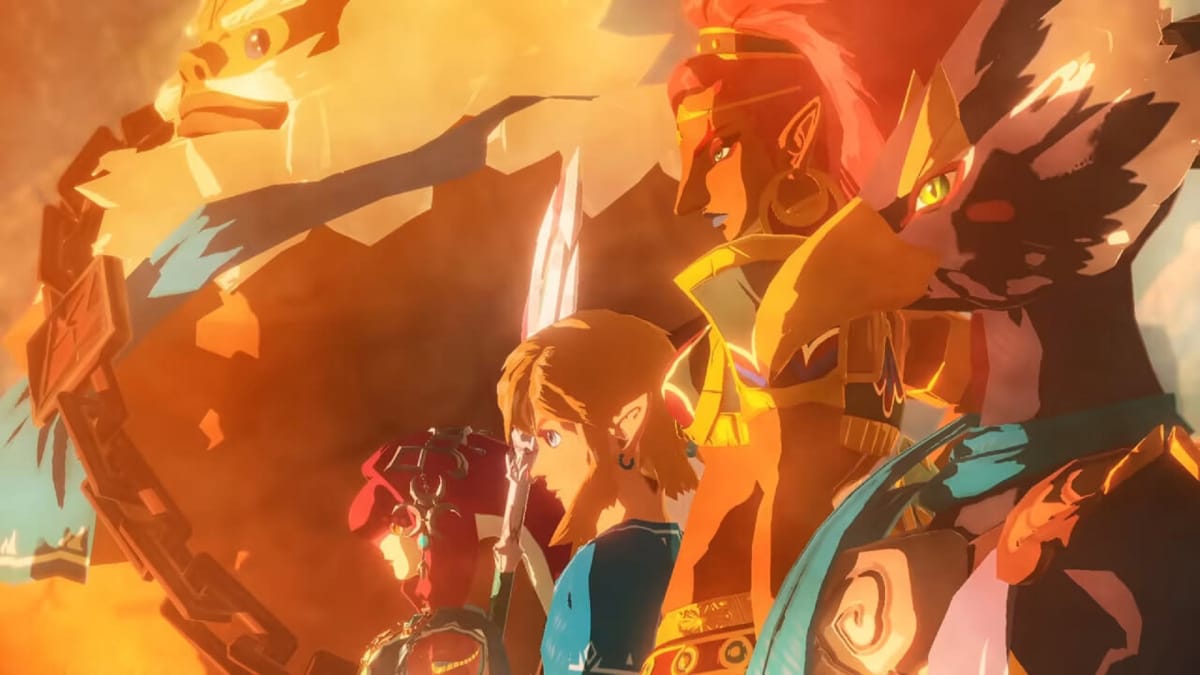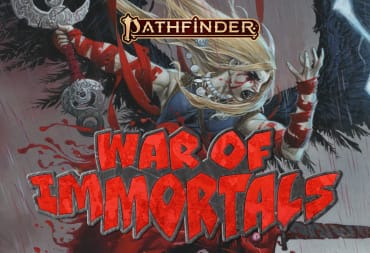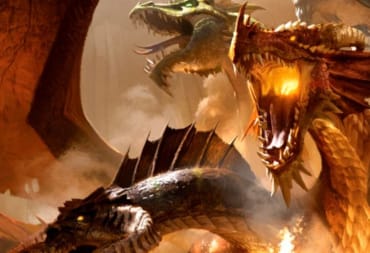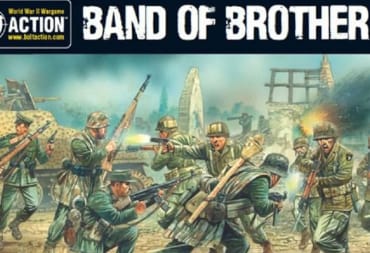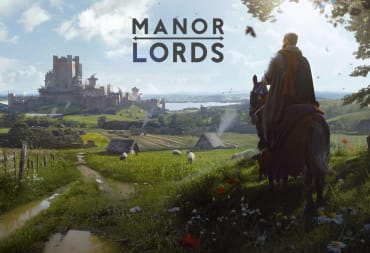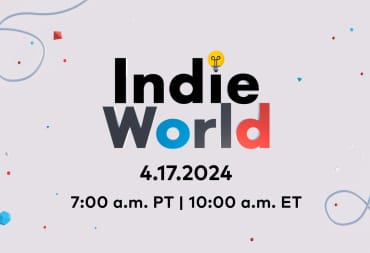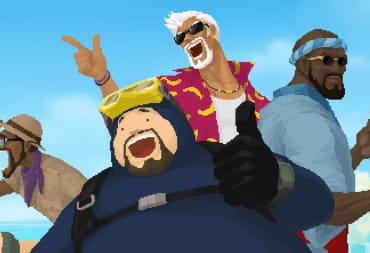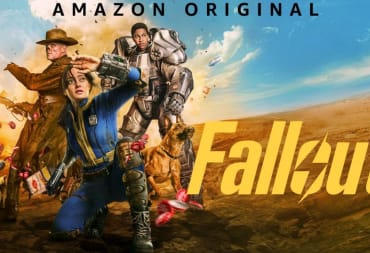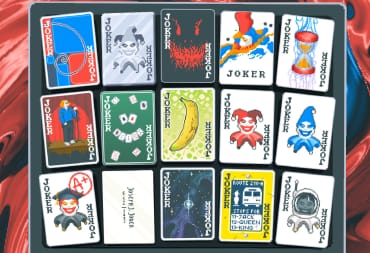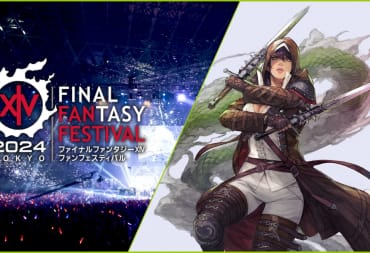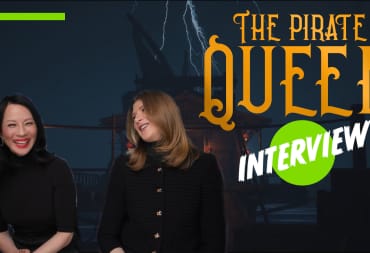Recently, Hyrule Warriors: Age of Calamity received its second and final DLC expansion, rounding out the game with new missions, extra story sections, and two more playable characters. So, with the game well and truly complete, we find ourselves asking the question: Is it better than the original Hyrule Warriors?
Detractors of the musou genre popularized by Koei Tecmo’s Dynasty Warriors games will argue that every musou plays exactly the same (something even some fans won’t completely deny). But while both Hyrule Warriors games have fundamentally similar gameplay mechanics (at least in terms of combat), there are still enough key differences to distinguish the two and justify playing both.
So, with Age of Calamity "done," let's break down and compare the key aspects from both Hyrule Warriors games and see if Age of Calamity is an improvement of its predecessor or if the original game is the superior version.
Visuals and Performance
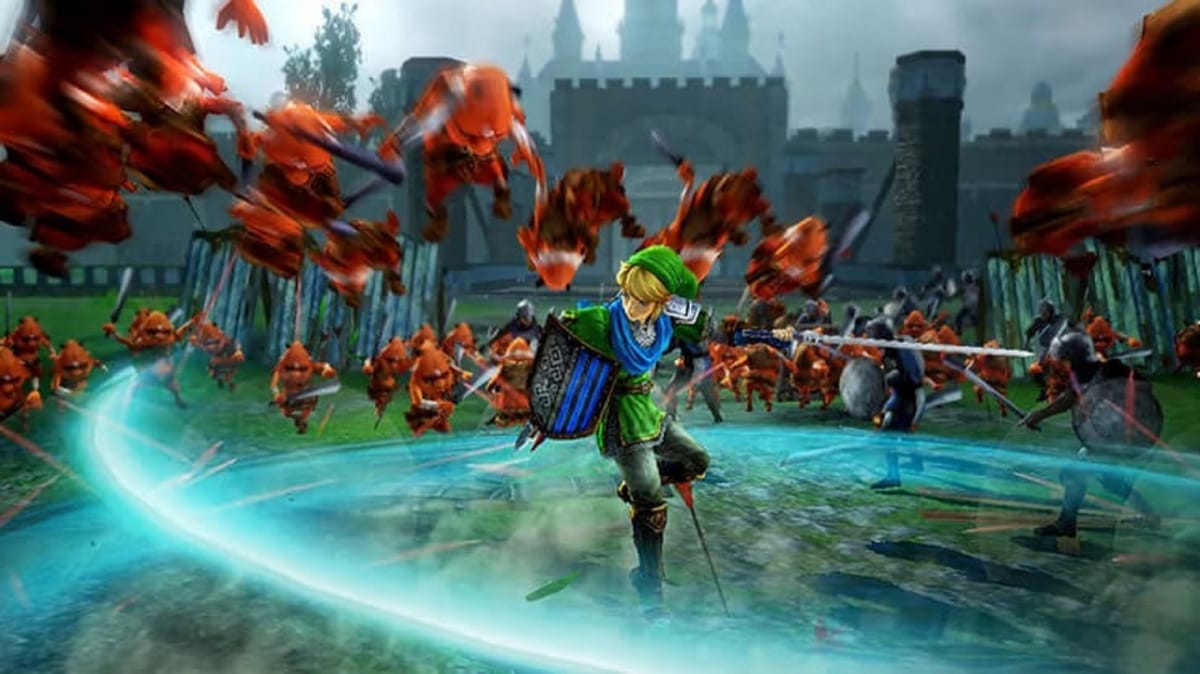
When it comes to deciding which Hyrule Warriors has the best visuals, it’s admittedly a question of personal taste since neither game is objectively better. Whilst Age of Calamity retains Breath of the Wild’s distinct cel-shading visual style, the original Hyrule Warriors isn’t as consistent. The majority of the main cast and environments are depicted in a compromised mixture of realism and cartoony art styles, while others are depicted differently to reflect the era of Legend of Zelda games they’re drawn from. The Bokoblin enemies from Skyward Sword, for example, have more cartoonish proportions compared to the grittier, grimier looking Bulblin enemies from Twilight Princess.
However, original Hyrule Warriors’ conflicting art styles never work against it and most of the core cast of playable characters can stand side by side and still look like they fit together in this universe, with the exception of the incredibly stylized Wind Waker characters. But there can also be something charming in seeing disparate characters traversing through locations they clearly don’t belong in; it lends to the franchise-wide crossover appeal that the game is going for.
The topic of performance, however, isn’t as subjective. One of Age of Calamity’s biggest criticisms is how much it chugs. Even when battles are at their quietest, the game doesn’t achieve a smooth 60 fps, and you can feel the Switch struggling to handle the busier moments when there are a lot of enemy hordes on screen, with the endgame story missions being among the worst offenders. It’s one of the reasons why some are hoping for Nintendo to release the fabled and supposedly more powerful Nintendo Switch Pro. By comparison, original Hyrule Warriors, while not always perfect, offers a far smoother experience even during the more crowded fights. So, if unstable frame rates are a massive turn off for you, then you’ll want to stick with the original game.
Playable Roster and Story
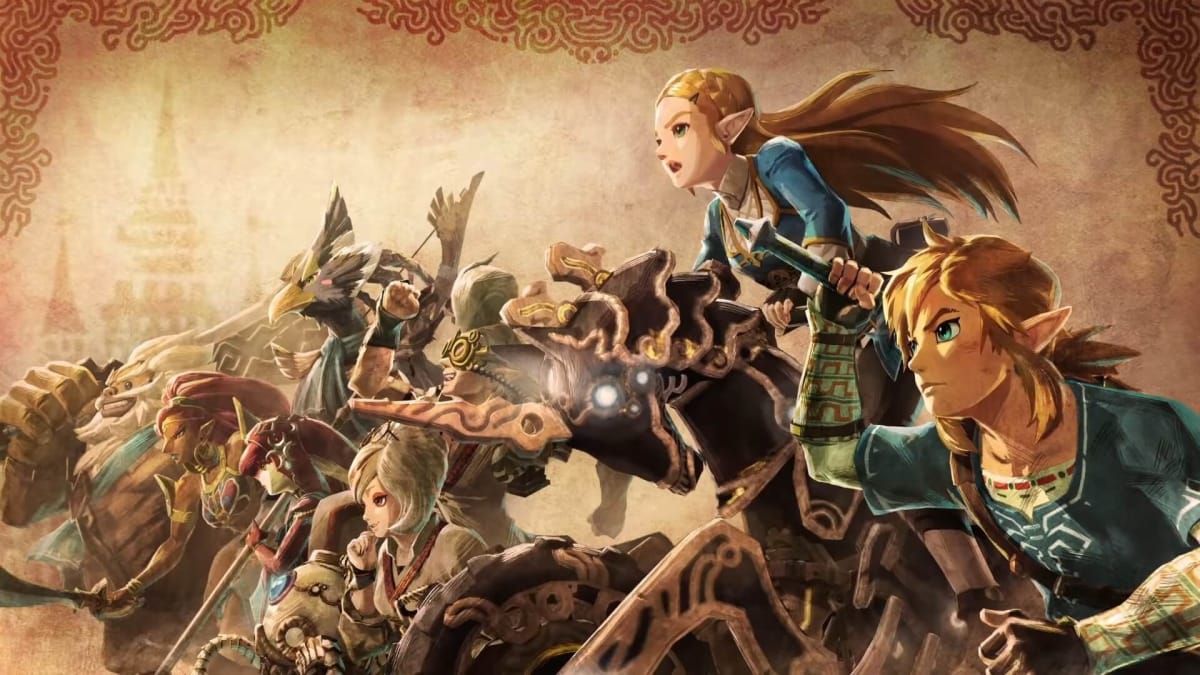
It almost seems unfair to compare character rosters when original Hyrule Warriors has the distinct advantage of being a series-wide crossover. Not to mention it received more DLC than Age of Calamity, bumping the original roster of 13 to 29. By comparison, Age of Calamity began with 18 and only received three extra characters post-launch. It’s still a solid roster, with a healthy mixture of expected heroes, surprise additions (like the Great Fairies), and entirely new additions to Breath of the Wild’s world, but original Hyrule Warriors’ eclectic mix of fan favorites across the entire franchise, both heroes and villains, certainly makes it more appealing.
Although original Hyrule Warriors does offer a rare, deliberately Avengers-like experience in witnessing all these classic characters standing shoulder-to-shoulder in a war to save the world, its actual story is pretty barebones and simple. It arguably doesn’t need to offer anything more since the core appeal is just having the cast band together, but it never takes full advantage of having the likes of Darunia, Midna, and Fi all on the same team. There are no Fire Emblem-esque support conversations that allow for fun and unique character interactions.
Age of Calamity, by comparison, has a far more engaging narrative. Initially billed as a prequel to Breath of the Wild, allowing fans to experience what came before the Calamity and how the heroes ultimately failed, it’s common knowledge at this point that things play out quite differently. It’s no more convoluted than the original Hyrule Warriors’ narrative and doesn’t do anything too radical for a Legend of Zelda game, but there are far more instances of downtime between fights where the characters can just talk. It goes out of its way to further flesh out the rather taut relationship between Zelda and her father, allows the Champions to interact with their future counterparts thanks to time-travel shenanigans, and even the comedically villainous Master Kohga, a one-off boss fight in Breath of the Wild, gets some redeeming qualities and eventually switches sides to aid the heroes.
The greater emphasis on story makes it much easier to become emotionally invested in Age of Calamity’s plot than the original Hyrule Warriors. Plus, it has the added advantage of having proper voice acting. It’s something the original game desperately needed even back in 2014, three years before Breath of the Wild introduced voice acting properly to the Zelda franchise (not counting the infamous CD-i games). The English voice acting admittedly doesn’t appeal to everybody, but the original Hyrule Warriors’ dynamic cutscenes and attempts at drama and characterization would have benefitted greatly had there been actual voice acting and not just the occasional grunt or gasp.
Amount of Content
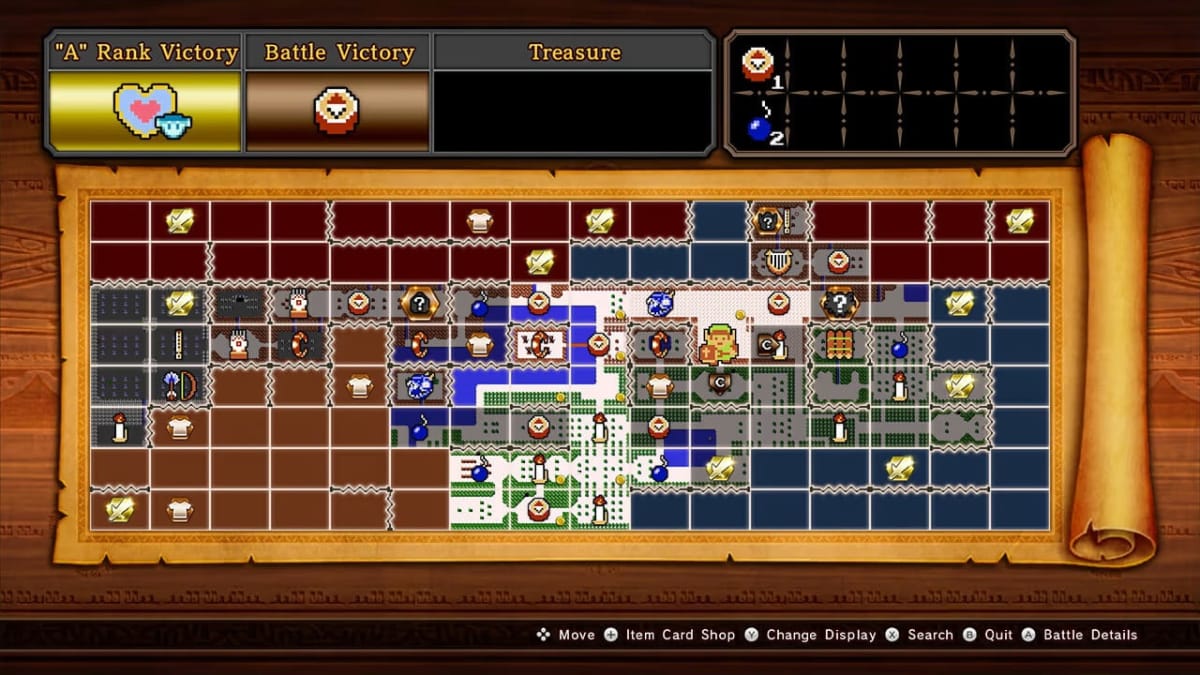
Both games can and will eat up so much of your time. Age of Calamity offers 20 story missions, an additional eight with the DLC, more than 150 optional challenges, and more than 400 side quests to complete. The challenges are the perfect place to grind character levels in preparation for the next story mission and range from being overtly simplistic, like defeating a certain number of ice-based enemies, to incredibly intense, like defeating a horde of enemies without taking a single hit.
The side quests, which reward you with new attacks for the characters and other upgrades, only require a certain number of materials to complete. Fortunately, since materials can be earned simply through completing any level, you won’t spend too much time needing to grind for them. Some side quests will also unlock shops to buy materials from and the ability to know which materials can be acquired from which levels to make the whole process slightly easier. There is admittedly a lack of diversity to the gameplay, but if you wind up loving Age of Calamity’s core gameplay loop, you’ll be thrilled to know that it has enough content to keep you going for days.
Original Hyrule Warriors somehow has even more stuff to do. The main story mode is only slightly shorter than Age of Calamity’s (18 levels instead of 20), but it adds another five missions centered around antagonist Cia and her allies, five for best girl Linkle (who has yet to reappear in another game which is an actual crime), and an epilogue chapter consisting of four levels set in the Wind Waker timeline.
On top of that are the Pieces of Heart and Heart Containers that are hidden throughout each chapter that require more thorough exploration and two Gold Skulltulas which unlock puzzle pieces that, in turn, can unlock more content. Every level has one Skulltula that will appear once 1,000 enemies are defeated, which is incredibly easy to do, but the other Skulltulas require you to not only play on hard mode but fulfill certain conditions that the game doesn’t even tell you. You’re only given a vague hint, requiring either constant experimentation or Googling a walkthrough.
It doesn’t even end there either, since original Hyrule Warriors has an entire secondary mode called Adventure Mode, consisting of 10 maps each with their own unique missions that require you to clear them with at least a certain ranking in order to proceed (usually an A). On top of that is the optional Challenge mode that lets you play as Beast Ganon himself (the big pig monster he sometimes turns into) or a giant Cucco, and My Fairy, a Tamagotchi-style mode where you raise a companion Fairy to aid you in battles.
The point is, when it comes to the amount of content on offer, original Hyrule Warriors’ easily trumps Age of Calamity in that department. However, this ironically makes it its biggest strength and biggest weakness.
Ease of Play and Accessibility
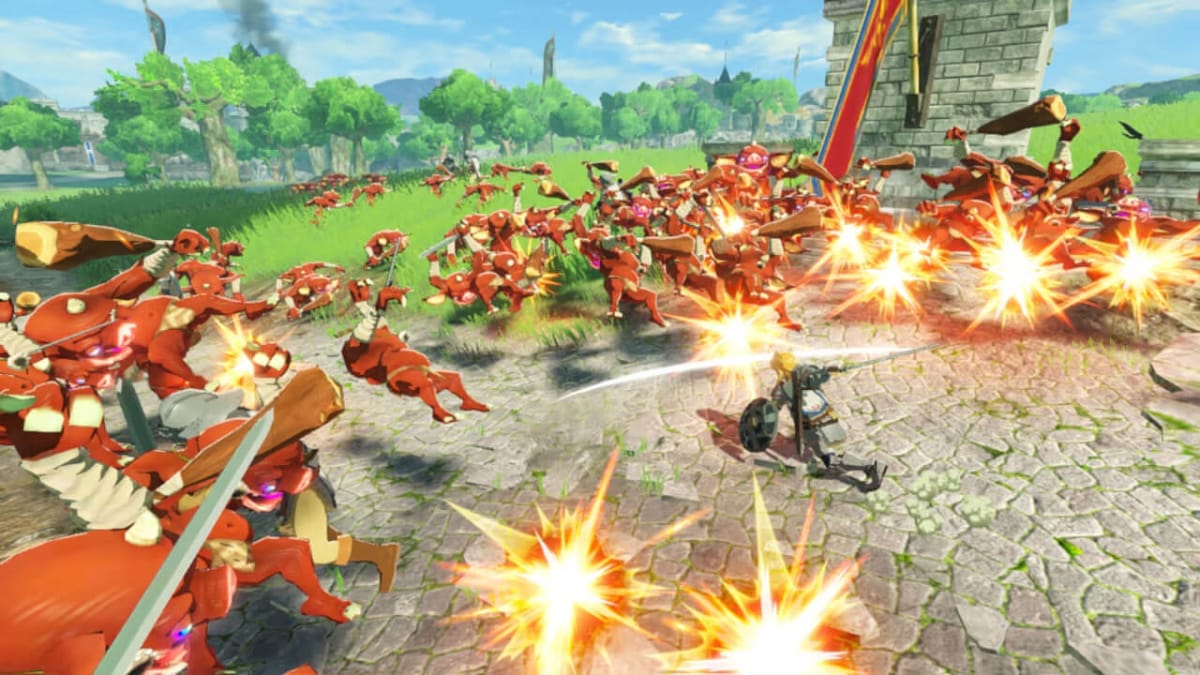
What ultimately matters when it comes to comparing the two games is which one is more accessible to a newbie player. Frankly, while maybe offering less to do than its predecessor, Age of Calamity is easily the more welcoming experience of the two. Original Hyrule Warriors’ amount of content is not only arguably overwhelming, but bars much of it behind harder difficulty modes and tough challenges. There’s obviously nothing wrong with that, and many players relish the idea of needing to work harder and play better to unlock everything a game has to offer. But for the casual player looking for a stress-free experience, Age of Calamity is the way to go. Everything in Age of Calamity can be achieved and unlocked on the easiest difficulty; the harder difficulties don’t even reward you with more Rupees or experience, making them well and truly optional.
The core gameplay itself is far more accessible too since, while it does play like a musou, Age of Calamity forgoes many of the franchise’s hallmarks. Unless the mission requires it, it’s not mandatory to capture enemy forts, your home base is rarely under threat, and your AI allies (at least the main playable cast) can’t even die except during specific escort missions. And while the dreaded Korok seeds return and are as nightmarish to locate here as they are in Breath of the Wild, an online guide can render the whole ordeal a non-issue.
Compare this to the original Hyrule Warriors where you need to constantly be aware about the state of the battlefield, where losing a fort or a key ally can be a significant and worrying turning point. At its worst, it can sometimes feel like the AI allies are incapable of defending themselves, forcing you to abandon any progress you’re making and constantly run back to protect or recapture forts. These situations can be immensely frustrating and a massive turn-off to anyone who isn’t a die-hard musou fan. If original Hyrule Warriors is a Dynasty Warriors game in Zelda clothing, Age of Calamity is the reverse.
It's for this reason and this reason only that, ultimately, it’s far easier to recommend Age of Calamity to someone than the original. It has a satisfying gameplay loop and offers loads to do while ensuring it all feels achievable, even to someone who may have never touched a musou or a Zelda game before, as opposed to original Hyrule Warriors where it feels like you could be stuck playing it for over a year and still have only seen half of what it contains.
As a reminder, this doesn’t necessarily make Age of Calamity a better game or the original Hyrule Warriors a worse one. At the end of the day, these are two solidly entertaining titles well worth your time and money. It’s just recommended that you start with Age of Calamity first. If you unlock everything it has to offer and still wish for more, you thankfully have a second, albeit more intense and demanding, game waiting for you.
Have a tip, or want to point out something we missed? Leave a Comment or e-mail us at tips@techraptor.net
